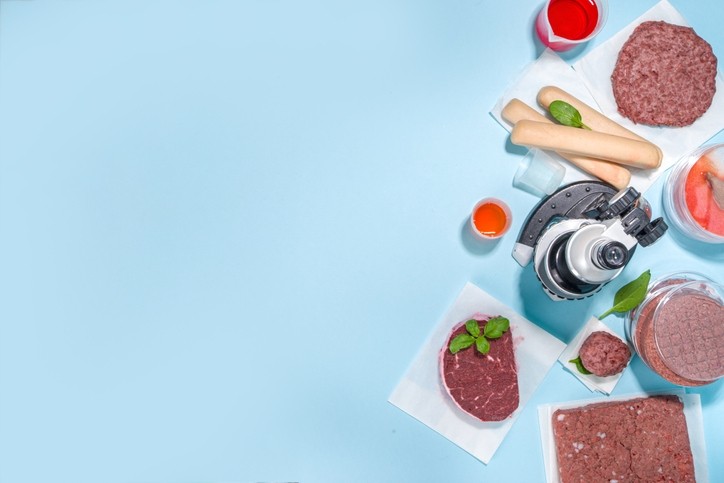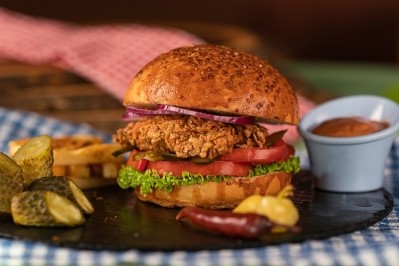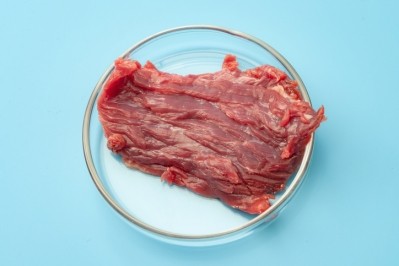SuperMeat on why its business model is key to overcoming cultivated meat industry bottlenecks

The cultivated meat industry is accelerating towards commercialisation thanks to green lights in Singapore, the US and plans afoot in Japan, believes Savir.
Approval in Europe is going to take “a bit longer”, but the CEO is confident the said moves will ultimately pave the way for the EU to “to jump on board as well”.
SuperMeat was a founder member of Cellular Agriculture Europe, launched in 2021 to represent the industry in Europe. Savir told us it is “being incredible active” in corresponding with regulatory bodies in Europe.
For example, Beth Loberant, Head of Regulatory Affairs at SuperMeat, is on the Cellular Agriculture Europe Board of Directors tasked with helping the EU’s regulatory bodies get “up to speed with what is needed, what the companies are doing and providing the ability for them to build their framework. We are working with some of our partners to show them the industry is on board with this as well; that they are motivated and eager to get this rolling.”
Several firms including SuperMeat, GOOD MEAT (the first company to commercialize cell-cultured meat), Believer Meats (formerly Future Meat Technologies), BlueNalu, Aleph Farms, Wildtype, UPSIDE Foods and Shiok Meats have now opened pilot facilities for cultivated meat.
“The phase we're in right now is the commercialization phase,” said Savir. “Companies are receiving regulatory approvals and are now going to meet the market for the first time at some sort of commercial scale. It was done at some very small level in Singapore, but now it's gonna get real with the US.”
Cultivated meat companies demonstrate commercial viability cost efficiency of the system
The most critical aspect to this, said Savir, is that cultivated meat companies demonstrate commercial viability cost efficiency of the system.
SuperMeat is in the process on submitting its US GRAS dossier where it has a commercial launched planned by early 2025, with Europe, he hopes, to follow.
Last year the company was buoyed by the ‘first-ever’ public blind tasting comparing cultivated and conventional chicken. According to Savir this showed that cultivated meat and traditional meat can be indistinguishable. “If you demonstrate its equivalence on the fundamental level then there's no limit to what you can achieve in terms of the diversity of different kinds of applications.”
SuperMeat is working to develop a "meal-ready" chicken cultured meat product created through the use of cell culture. It plans to supply its cultivated meat as an ingredient to meat and food companies globally. Its focus in the short term is getting partners to its facility “where they experiment with our product and with the different kinds of applications it has and then we develop applications for their target markets,” explained Savir.
Eventually, SuperMeat envisages a three-stage business model, first supplying applications made in-house; then supplying the cultivated meat as ingredient for the manufacture to develop whatever product application they want; then lastly supplying the technology for manufacturers to produce the products themselves.
For example, SuperMeat recently announced the signing of a Memorandum of Understanding with PHW Group, one of Europe’s largest poultry producers, that formalises a joint goal of bringing cultivated poultry products to European consumers via SuperMeat’s proprietary cultivated meat platform.
It has also inked a deal with Switzerland’s largest supermarket and meat manufacturer, Migros, to accelerate production and distribution of its products at a commercial scale.
Unlike company Aleph Farms, which wants to produce premium, purely whole cuts of meat, SuperMeat is focussed on the mass-market appeal of chicken as an ingredient.
“We are using embryonic stem cells which are early developing stem cells. These have the ability to produce any type of tissue,” he explained.
“We're growing the cells in suspension, very similar to the way you would brew beer, but they form the structure in suspension,” he added. “So you're getting small strands of meat, both muscle, fat, connective tissue. Then using extrusion and other kinds of food related processing, it is structured into different kinds of forms, whether it's a filet or other kinds of structures.”
Driving down costs and the scaling of manufacturing
Driving down costs and the scaling of manufacturing will be the largest operational hurdles to overcome, he explained – particularly producing feed for the cell lines on an industrial scale. “Feed amounts to between 60 to 80% of the cost of the end product,” explained Savir. This endeavour has resulted in another partnership, with food and biotechnology company Ajinomoto Co.
“A lot of the work is lowering the cost of the feed, and that's a part of the work that we're doing with Ajinomoto which relates to going to food grade ingredients instead of pharmaceutical grade and making it much more efficient,” Savir told us.
Even though SuperMeat is aiming to leverage the mass appeal of poultry, Savir said “the first products are going to hit the market, whether it's ours or other companies, are going to be premium. They're going to be served in foodservice.”
Lowering the cost of feed by producing it in high volume, will be key. Savir compares the trajectory of SuperMeat to that of Impossible Foods which “started at high-end restaurants to introduce the product, which allowed it to demonstrate the demand, and then build large scale factories that lowered the costs.”
Environmental questions
Also a potential bottleneck is whether cultivated meat is truly a solution to reduce the environmental impact associated with the traditional meat industry.
Lab-grown meat is not inherently better for the environment, claimed a recent pre-print study out of the University of California, Davis.
Of this, Cellular Agriculture Europe called it an attempt to spread misinformation, by ignoring important caveats and a range of scenarios. “The fundamental assumptions in this preprint report do not reflect actual industry plans or sourcing practices for cell feed,” it said, adding the UC Davis study has not been through a peer-review, so the assumptions and conclusions may change.
The findings of another formally peer-reviewed study published in the International Journal of Life Cycle Assessments did find that cultivated meat produced at scale using renewable energy could reduce the carbon footprint by 92%, land use by 90%, and water use by 66% compared to conventional beef production.
SuperMeat ultimately believes cultivated meat will enhance the food system, providing nutritional security, drastically reducing carbon emissions, and increasing food safety worldwide.
“What we're trying to do here is revolutionary… the potential benefit and value that can arise from this is incredible.”
























